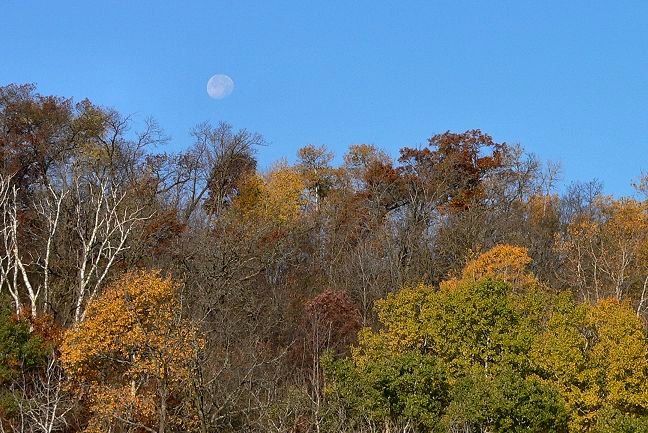We’ve been having lots of beautiful Indian summer days, but today winter has finally arrived. The temperature dropped steadily all day; there was a brisk northwest wind and periodic snow showers, alternating with sun shining through the clouds.
Snow showers in Center Valley
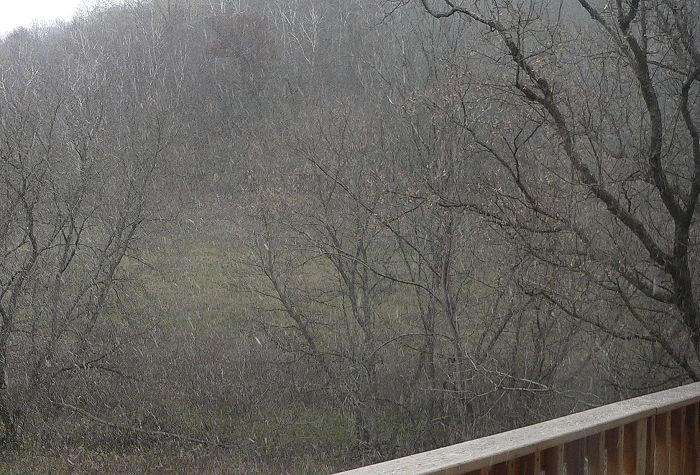
I’ve been working hard on Indian Grass Point – right above the house – trying to clear the brush from the south and west sides of the point. It’s very rewarding – there are prairie plants covering the ground, so once I cut away the brush, it’s like creating a new remnant.
This is some of the brush, with prairie plants growing underneath.

Here’s the view down the west side of the point before cutting away the brush.

It’s much steeper than it looks in the photo – here’s a picture that shows the slope.
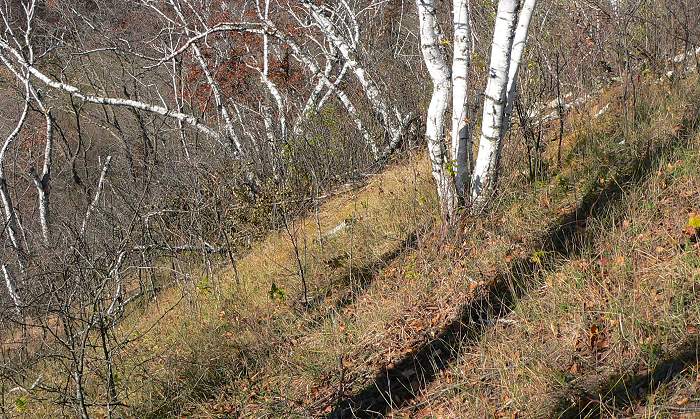
It’s a lot of work climbing up and down to cut, treat stumps, and then pile up all the brush! This is the view of the cleared hillside looking down from the top.

I do most of the clearing work on my knees – partly so I don’t slide down the hill, and partly so I don’t miss any of the little stems of Prickly Ash and Raspberry and Honeysuckle. While I was crawling around on my knees I found a nice little patch of Autumn Coral Root, just finished blooming.
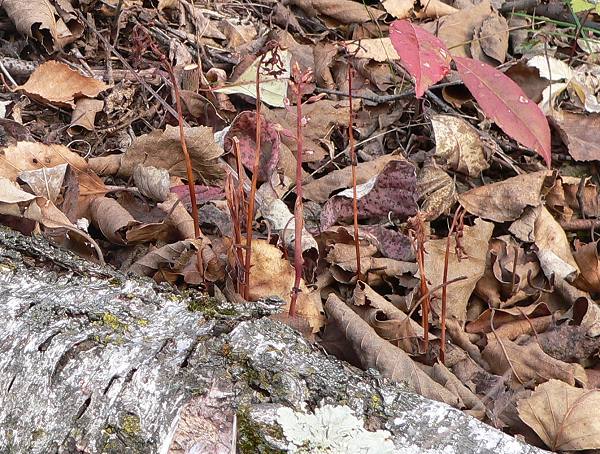
close-up of Autumn Coralroot (Corallorhiza odontorhiza)
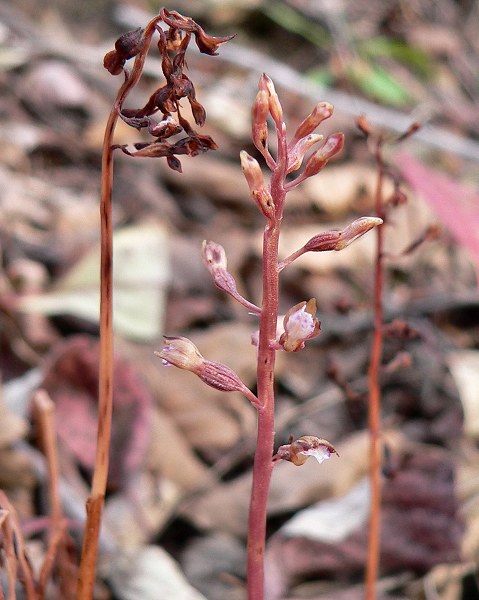
There’s still a lot to be done. This birch grove needs to be cut down – there’s prairie vegetation under all the trees.

Farther north along the same ridge is another west-facing prairie opening. One part of it, buried in brush, has a large patch of Prairie Ragwort, a savanna species of Special Concern in Wisconsin. I’m trying to clear some of the sumacs and prickly ash that are blocking the sun. This is the brushy area before I’d done any clearing.
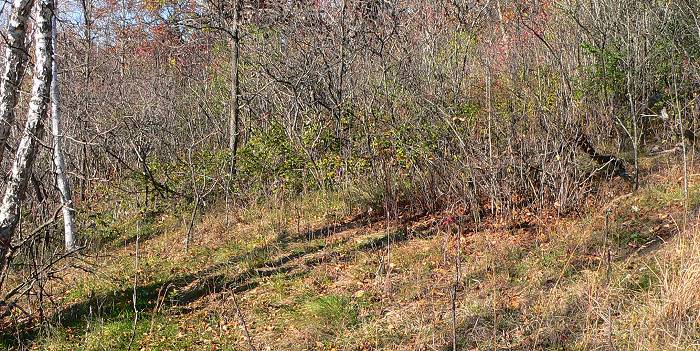
Prairie Ragwort leaves under the brush
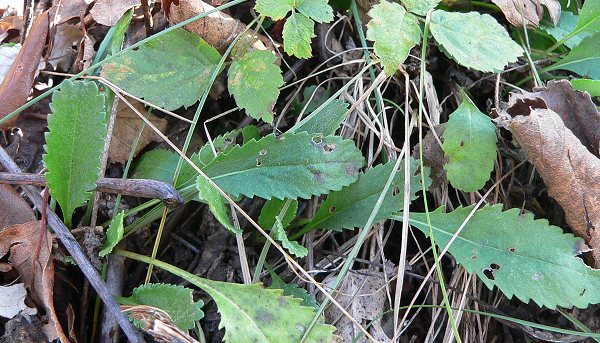
This is a view of the same area after I did some clearing – it still looks very overgrown. I hope there will be more good weather yet this fall so I can work on it a little more.
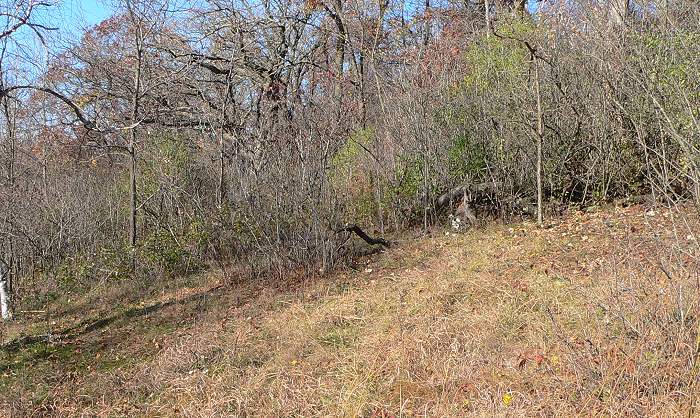
I’m still finding a few flowers blooming.
Harebell (Campanula rotundifolia)
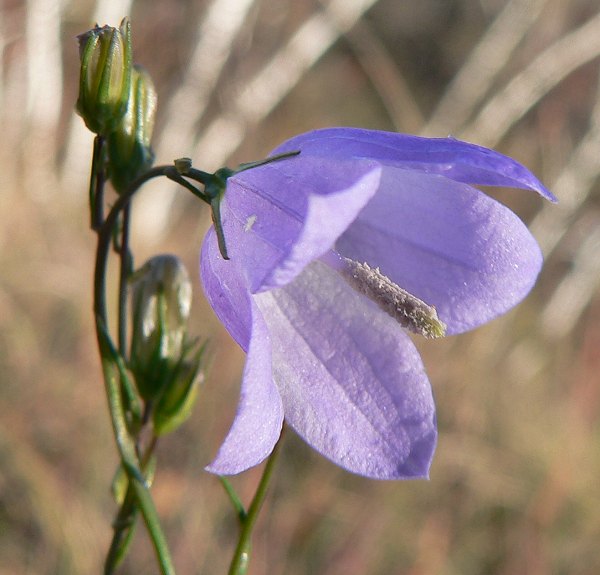
Sky Blue Aster (Aster oolentangiensis)
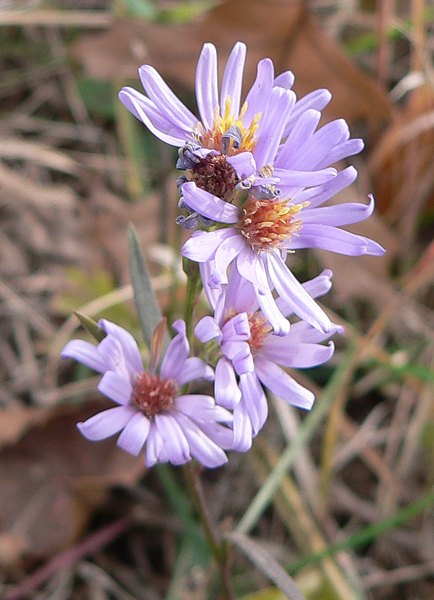
And some of the oak trees still have lots of color in their leaves. These are on Hidden Oaks Point.
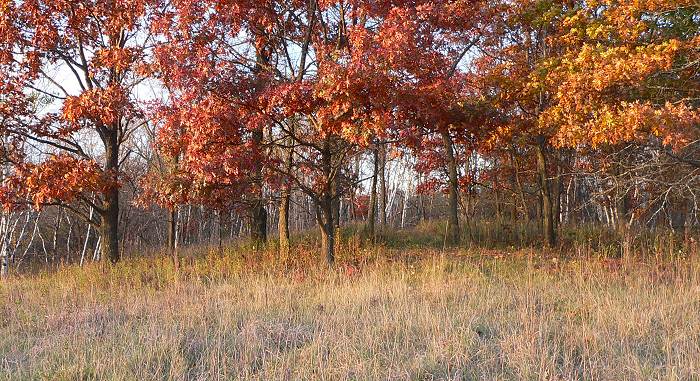
A team from the county surveyors office came by last week. They want to relocate all the original township survey markers that were put in around 1850. Here they are, searching in Volvo Meadow.
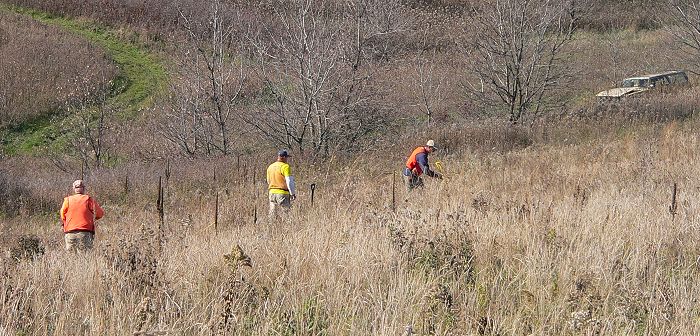
I checked this week, and they found the two markers that are on our land. One is at the corner point between our land and two neighbors. The other is a “quarter section” marker, in one of our fields. It’s fun to think about what the land was like when those original markers were put in.
This is the photo of the corner point between the two sections.
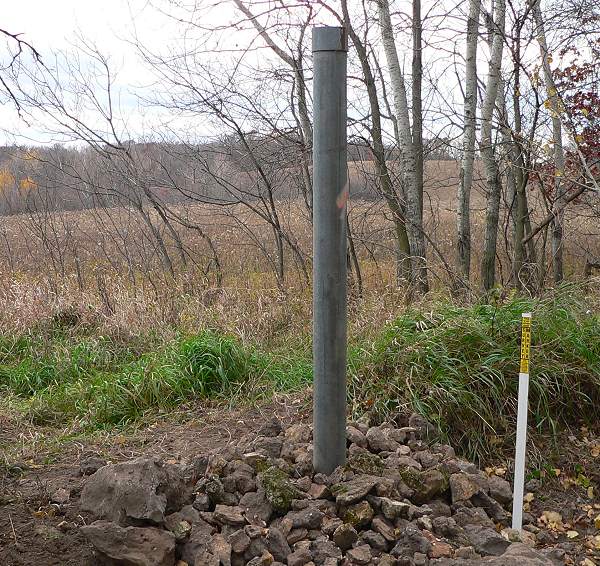
Here’s what the actual marker looks like
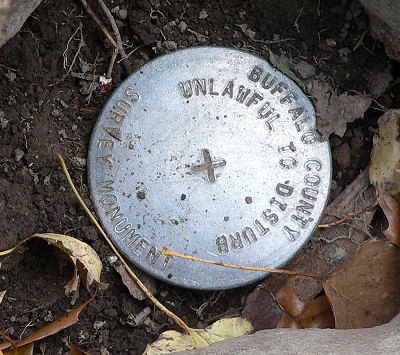
This is what the original surveyors notes said about that place:
Set post at Corner Section 2, 3, 34, & 35
B. Oak 8 S 83 E 133
B. Oak 9 N 78 E 146
Br. Oak 7 S 88 1/2 W 235
B. Oak 10 N 59 W 235
Surface hilly
Soil 2nd rate
Oak bushes & a few Black and Burr Oak trees
I think “B.Oak” is Black Oak, and “Br. Oak” is Burr Oak. The numbers after the names of the trees are the size of the trees. The “S83 E133 letters and numbers refer to the distance and direction those trees were from the marker.
Here’s the photo of the quarter section post.
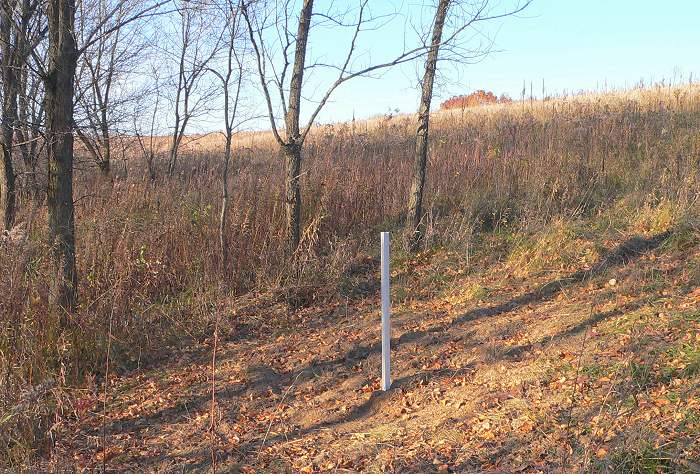
And this is what the original surveyors notes said:
Set post at 1/4 Section Corner
B. Oak 6 North 19 E 9
B. Oak 5 S 44 E 4
This is a photo that the surveyors took of what remained of the original quarter section post – set by James E. Freeman in August of 1848. The wood stake has rotted away, but the dark mark in the soil shows where it was.
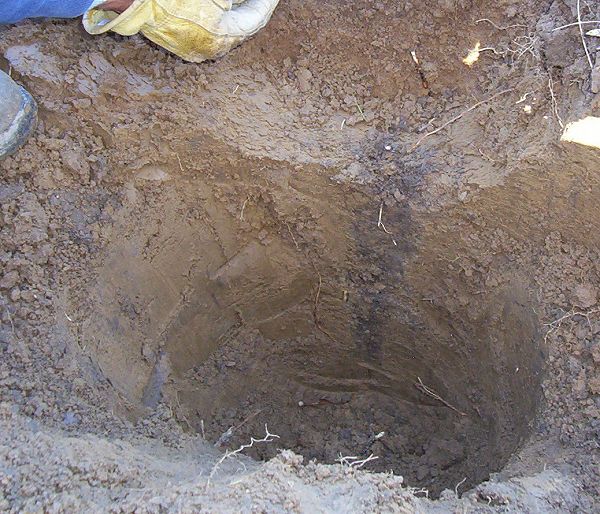
Frost on Round-headed Bush Clover

An odd puffball
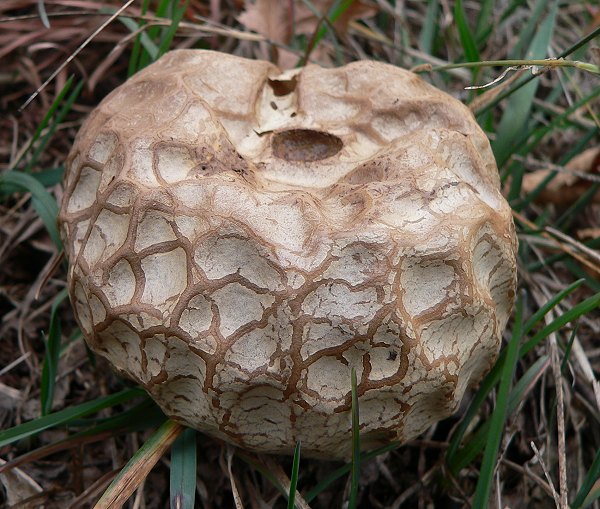
A saucy red squirrel
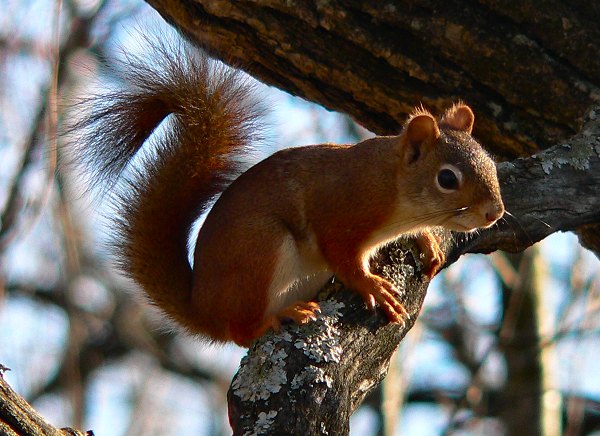
The moon over Tractor Meadow
